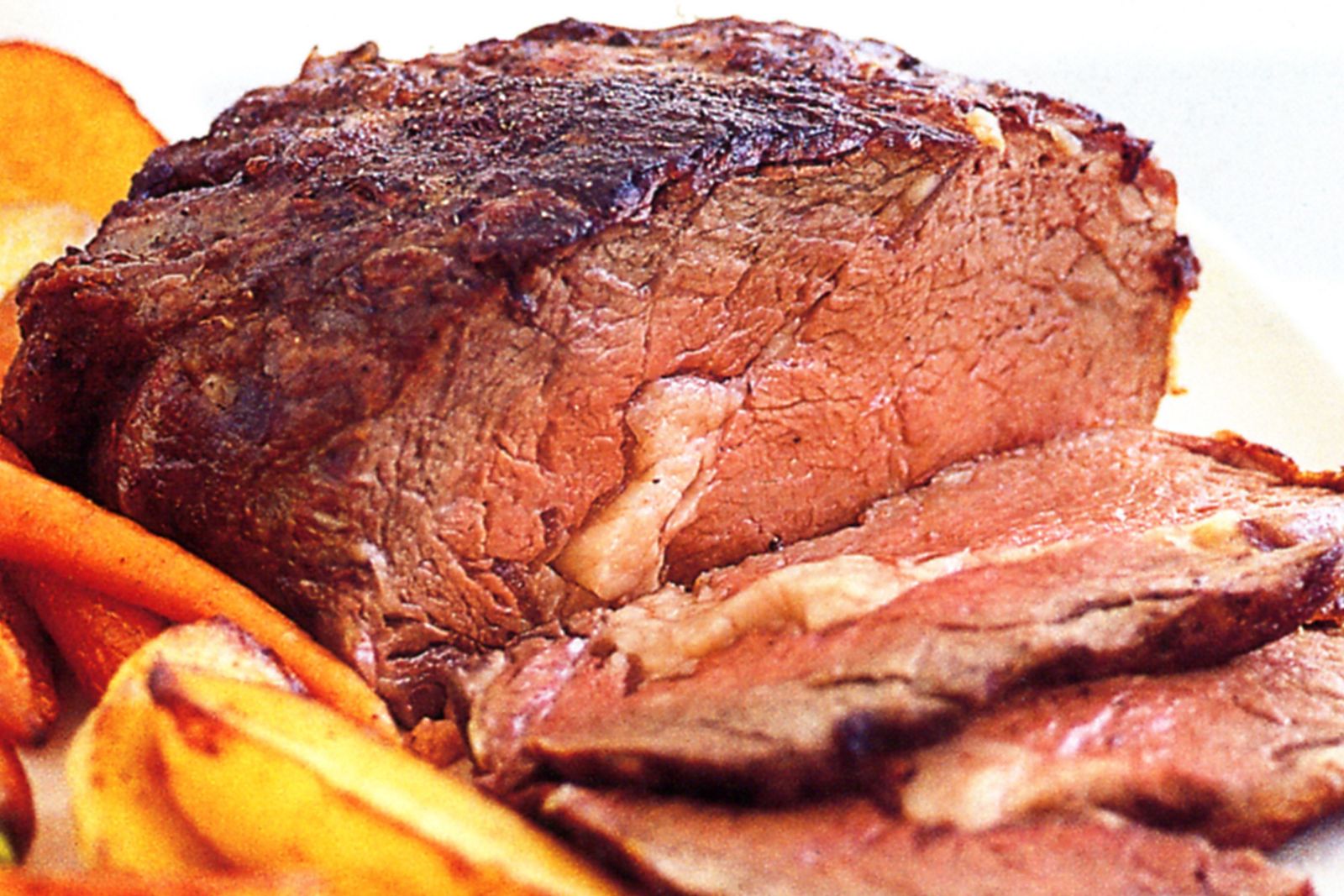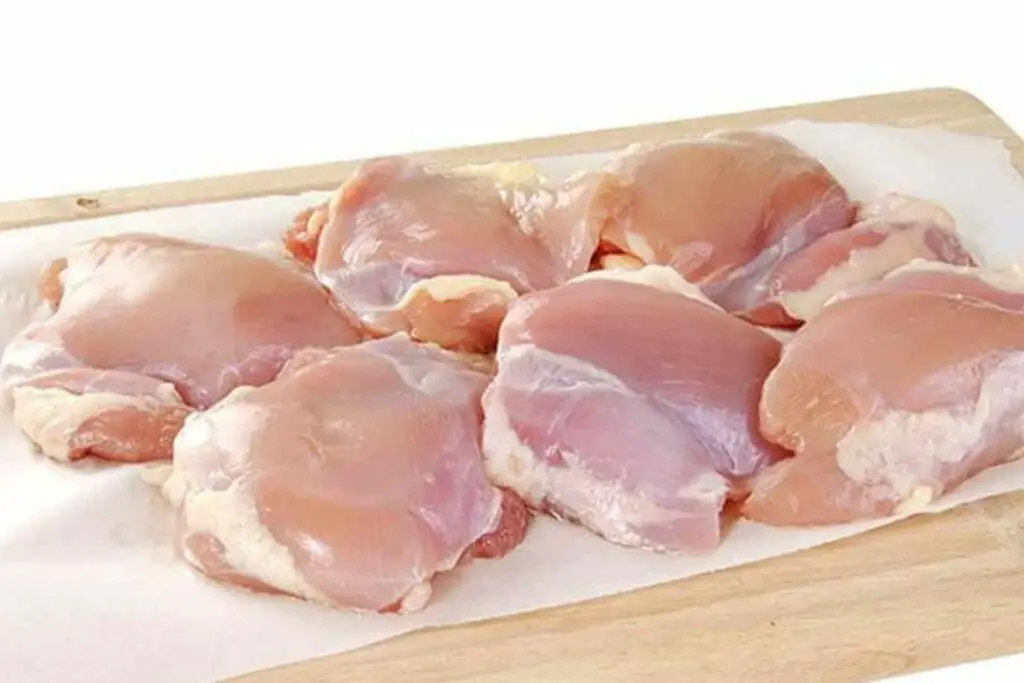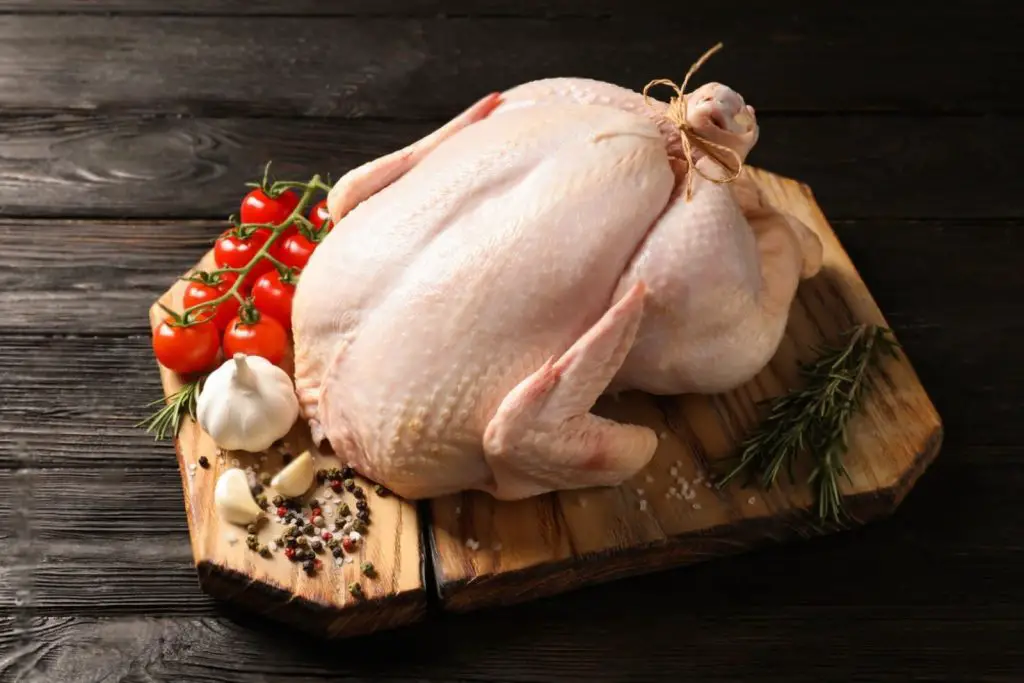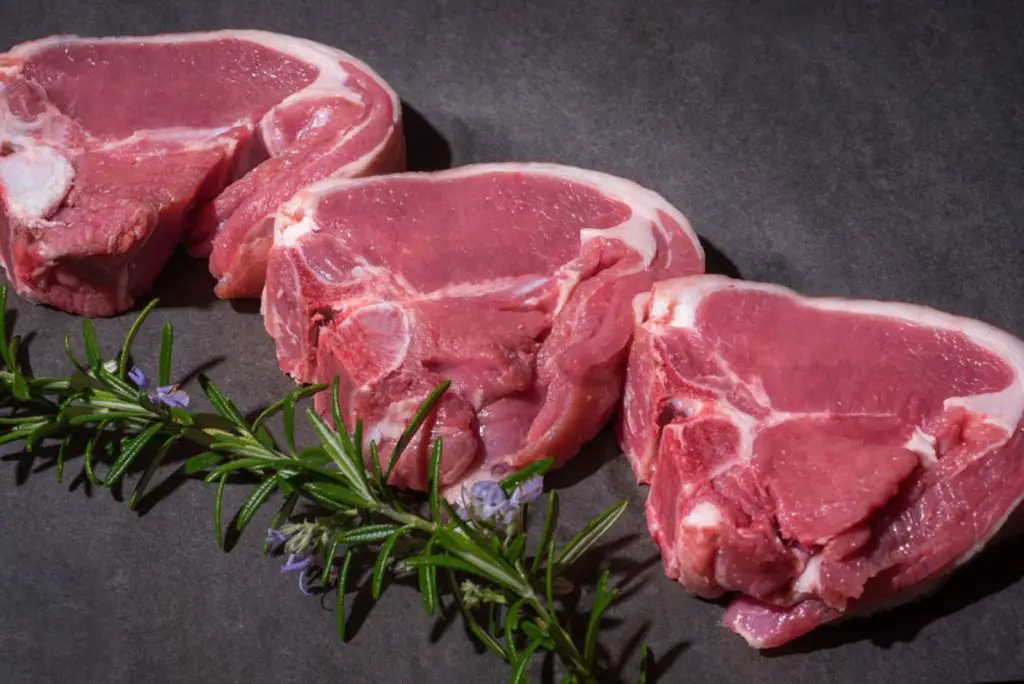
Beef roast is a popular and flavorful cut of meat that can be enjoyed in a variety of dishes. However, if you find yourself with an excess of beef roast or want to prepare it in advance for future meals, freezing it is a great option to preserve its freshness. Freezing beef roast not only extends its shelf life but also allows you to have a convenient and ready-to-use ingredient whenever you need it. In this article, we will explore the steps and techniques involved in properly freezing beef roast, ensuring that you can enjoy its deliciousness whenever the craving strikes.
Here are the simple steps to freeze beef roast:
Step 1: Select the Right Cut
This step is crucial because the quality and characteristics of the cut can significantly impact the end result after freezing and thawing.
When choosing a beef roast for freezing, it is important to opt for fresh and high-quality cuts. Look for roasts that have a bright color, and firm texture, and are well within their expiration date. Fresh roasts tend to freeze and thaw better, preserving their flavor and texture.
The marbling in the meat refers to the thin streaks of fat running through the muscle fibers. Well-marbled roasts have a higher fat content, which contributes to juiciness and tenderness. These roasts retain moisture better during the freezing and thawing process, resulting in a more flavorful and succulent final product.
Popular choices for beef roasts suitable for freezing include chuck roast, sirloin tip roast, or ribeye roast. These cuts are known for their rich flavor and tenderness, making them ideal for freezing and later use.
Additionally, it is important to ensure that the roast is properly trimmed. Trim away any excess fat or connective tissue before freezing. Fat can become rancid during freezing, affecting the taste and quality of the meat. Connective tissue can become tough and chewy when frozen, so removing it improves the overall texture of the roast.
By selecting the right cut of beef roast and ensuring it is properly trimmed, you set the foundation for a successful freezing process, preserving the quality, flavor, and tenderness of the roast for later enjoyment.
Step 2: Prepare the Beef Roast
Proper preparation helps to ensure that the roast retains its quality and flavor throughout the freezing and thawing process.
The first step in preparing the beef roast is to pat it dry using paper towels. This is important to remove any excess moisture on the surface of the meat. Moisture can lead to the formation of ice crystals during freezing, which can affect the texture and quality of the roast. By patting the roast dry, you reduce the risk of freezer burn and help preserve the meat’s natural juices.
After drying the roast, it’s time to season it according to your preference. You can use a combination of herbs, spices, and marinades to enhance the flavor of the roast. The choice of seasonings is entirely up to you and can be customized based on your personal taste preferences or the recipe you plan to use later on. Seasoning the roast before freezing allows the flavors to infuse into the meat during the freezing and thawing process, resulting in a more delicious end product.
Once seasoned, it is recommended to let the roast rest for a few minutes. This allows the flavors to penetrate the meat, enhancing the overall taste. The resting period also allows the seasoning to adhere better to the surface of the roast, ensuring a more even distribution of flavors.
By properly preparing the beef roast before freezing, you can ensure that it retains its moisture, flavor, and tenderness. Patting it dry removes excess moisture, seasoning adds flavor, and allowing it to rest allows the flavors to permeate the meat. These steps contribute to a more enjoyable eating experience when the roast is eventually cooked and served.
Step 3: Wrap and Pack
This focus is on the crucial task of wrapping and packaging the beef roast to ensure its quality is maintained during the freezing process.
The first step is to wrap the seasoned beef roast tightly with either plastic wrap or aluminum foil. The purpose of this wrapping is to create a barrier that prevents air and moisture from coming into contact with the meat. Wrapping the roast tightly helps to minimize the exposure of the meat’s surface to the cold air in the freezer, reducing the risk of freezer burn.
When wrapping the roast, it’s important to ensure that there are no exposed areas. Make sure the entire surface of the roast is covered by plastic wrap or aluminum foil. Any exposed areas can lead to moisture loss or the formation of ice crystals, which can negatively affect the quality and texture of the roast.
For added protection against freezer burn, it is recommended to place the wrapped roast in a freezer-safe plastic bag or a vacuum-sealed bag. These bags provide an extra layer of insulation and further prevent air and moisture from reaching the meat. If using a plastic bag, make sure it is specifically designed for freezer use to withstand the low temperatures.
Before sealing the bag, squeeze out any excess air to minimize the risk of freezer burn. The presence of air inside the packaging can promote the formation of ice crystals and lead to moisture loss, compromising the quality of the beef roast.
By wrapping the seasoned roast tightly, using appropriate materials, and minimizing the presence of air, you can effectively prevent freezer burn and maintain the quality of the beef roast during storage. Proper wrapping and packaging ensure that the roast remains fresh, flavorful, and free from any unwanted texture changes when it is eventually thawed and cooked.
What is the recommended packaging for freezing beef roast?
The recommended types of packaging for freezing beef roast are as follows:
- Plastic wrap: Wrap the beef roast tightly in plastic wrap to create an airtight seal. This helps to prevent air exposure, which can lead to freezer burn and moisture loss.
- Aluminum foil: Wrap the beef roast tightly in aluminum foil, ensuring all sides are covered. Aluminum foil provides an additional layer of protection against freezer burn and helps maintain the moisture and flavor of the roast.
- Airtight freezer bags: Place the beef roast in airtight freezer bags and squeeze out as much air as possible before sealing. Airtight freezer bags are designed to keep out air and moisture, preserving the quality and taste of the beef roast.
- Heavy-duty freezer-safe containers: Use heavy-duty freezer-safe containers with tight-fitting lids to store the beef roast. These containers provide durable and reliable protection against air and freezer burn.
Proper packaging is essential to maintain the quality of the beef roast during freezing, protecting it from freezer burn, moisture loss, and unwanted flavors from the freezer.
Step 4: Label and Date
The focus is on the importance of labeling and dating the packaged beef roast. This step is crucial for maintaining organization and ensuring that the frozen roast can be easily identified and used in a timely manner.
Labeling the package with the cut of meat is essential because it helps you quickly identify the contents of each package. This is particularly helpful if you have multiple types of beef roasts stored in the freezer. By labeling the package with the specific cut, such as chuck roast, sirloin tip roast, or ribeye roast, you can easily locate the desired roast when needed.
In addition to the cut of meat, it is important to include the date of freezing on the label. This information allows you to keep track of how long the beef roast has been in the freezer. By knowing the freezing date, you can practice proper inventory management and ensure that the oldest roasts are used first. This helps prevent any roasts from being forgotten or left unused for an extended period, ensuring that you make the most of your frozen meat supply.
By labeling and dating the package, you maintain an organized freezer inventory and ensure that the beef roasts are used in a timely manner. This step helps prevent waste, allows for efficient rotation of frozen meats, and makes meal planning easier. Taking a few moments to label each package can save time and help you make the most of your frozen beef roast supply.
Step 5: Freeze the Beef Roast
The focus is on the proper freezing of the wrapped and labeled beef roast. This step is crucial for preserving the quality, flavor, and safety of the meat during storage.
To begin, it is important to place the wrapped and labeled beef roast in the coldest part of the freezer. The coldest areas are usually the back or bottom shelf. These areas provide a more stable and consistent temperature, which is beneficial for maintaining the quality of the meat. Placing the roast in the colder part of the freezer helps ensure that it freezes quickly and evenly.
Sufficient space should be provided around the package to allow for proper airflow. Adequate airflow promotes uniform freezing and prevents the formation of ice crystals. If packages are tightly packed together or placed too close to the freezer walls, it can restrict airflow and lead to uneven freezing, potentially compromising the quality of the roast.
Maintaining a temperature of 0°F (-18°C) or lower is vital for preserving the quality of the beef roast during freezing. Freezing at this temperature ensures that the meat freezes rapidly, preventing the formation of large ice crystals. Large ice crystals can damage the meat’s cellular structure, resulting in a loss of moisture and texture.
It is important to avoid overcrowding the freezer, as it can hinder the freezing process. Overcrowding reduces the efficiency of the freezer and may lead to uneven temperature distribution. To prevent this, organize the freezer space and make sure there is enough room for air circulation around each package.
By following these guidelines, you can ensure that the beef roast freezes properly, preserving its quality and taste. Placing it in the coldest part of the freezer, allowing for proper airflow, maintaining a low temperature, and avoiding overcrowding are all important factors in achieving optimal freezing conditions. These steps help to maintain the integrity of the beef roast, allowing for a delicious and high-quality meal when it’s time to cook and enjoy it.
How long can beef roast last in the freezer
Beef roast can last in the freezer for approximately 4 to 12 months. The exact duration depends on factors such as the type of roast, packaging, and the freezer’s temperature consistency. Properly stored and wrapped beef roasts can maintain their quality and flavor for an extended period, but it’s best to consume them within the recommended time frame for the best taste and texture.
Step 6: Thaw the Frozen Beef Roast
The focus is on the proper thawing and cooking of the frozen beef roast. Thawing the roast correctly is crucial for food safety and to maintain the quality of the meat.
The safest method for thawing a frozen beef roast is to transfer it from the freezer to the refrigerator and allow it to thaw slowly. This method requires planning ahead, as it can take several hours or even overnight depending on the size of the roast. Thawing in the refrigerator ensures a controlled and gradual thawing process, minimizing the risk of bacterial growth and maintaining the meat’s texture and flavor.
If you need to thaw the beef roast more quickly, you can use the defrost function on your microwave. However, it’s important to follow the manufacturer’s instructions and use caution to avoid partially cooking the meat during the thawing process. It’s recommended to check the roast frequently to ensure even thawing and prevent any cooked areas.
Another method for quicker thawing is to submerge the wrapped beef roast in cold water. Make sure the roast is securely wrapped to prevent water from seeping in. Change the water every 30 minutes to maintain a cold temperature. This method allows for faster thawing compared to refrigeration but requires more attention and monitoring.
Once the beef roast is completely thawed, it is ready to be cooked following your preferred recipe. Thawing the roast properly ensures even cooking and food safety. Depending on your recipe, you can roast, braise, or grill the beef to achieve your desired level of doneness.
By following the appropriate thawing method and cooking the beef roast properly, you can ensure safe consumption and enjoy a delicious meal with the flavors and textures preserved from the freezing process.
Other related questions
Can you refreeze beef roast?
It is generally not recommended to refreeze a beef roast that has been previously thawed. Refreezing can affect the quality and safety of the meat. Once a beef roast has been thawed, it is best to cook it and consume it within a reasonable time frame to ensure food safety and maintain the best taste and texture.
How do I know if the beef roast has gone bad after being frozen?
To determine if a frozen beef roast has gone bad, look for signs such as off smells, discoloration, or freezer burn. A sour or rancid odor may indicate spoilage. If the meat appears discolored or has dry, brownish spots, it may have freezer burn, which affects the texture and flavor. If any of these signs are present, it is best to discard the beef roast to avoid the risk of foodborne illness.
Can I freeze a beef roast in portions, or should it be frozen whole?
The beef roast can be frozen in portions or as a whole, depending on personal preference and future meal planning. Freezing in portions allows for more flexibility when thawing and cooking, as smaller portions can be used as needed. However, freezing the beef roast as a whole may help preserve its moisture and tenderness more effectively. Proper packaging and labeling are important to maintain organization and ensure the desired portion is easily identifiable when needed.
Can you freeze beef roast after it’s been cooked?
Yes, you can freeze beef roast after it has been cooked. Freezing cooked beef roast can be a convenient way to preserve leftovers or prepare meals in advance. It is important to cool the cooked roast before freezing and store it in airtight, freezer-safe containers or packaging to maintain its quality. When ready to consume, thaw the frozen cooked beef roast in the refrigerator and reheat thoroughly before serving.
Can I freeze leftover beef roast?
Yes, you can freeze leftover beef roast. Ensure that the roast has been properly cooked and cooled before freezing. Place the leftover beef roast in airtight freezer bags or containers, removing as much air as possible. Label the packaging with the date and contents. Freezing leftover beef roast helps extend its shelf life and allows you to enjoy it at a later time. When you’re ready to consume the leftovers, thaw them in the refrigerator and reheat them thoroughly before serving.







